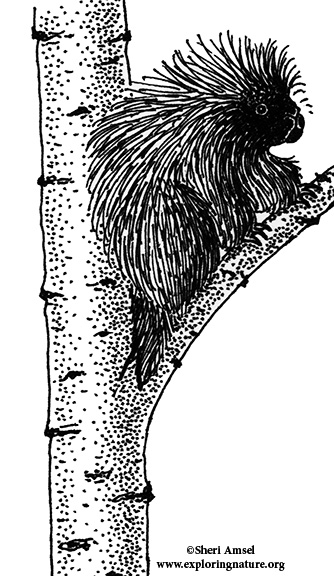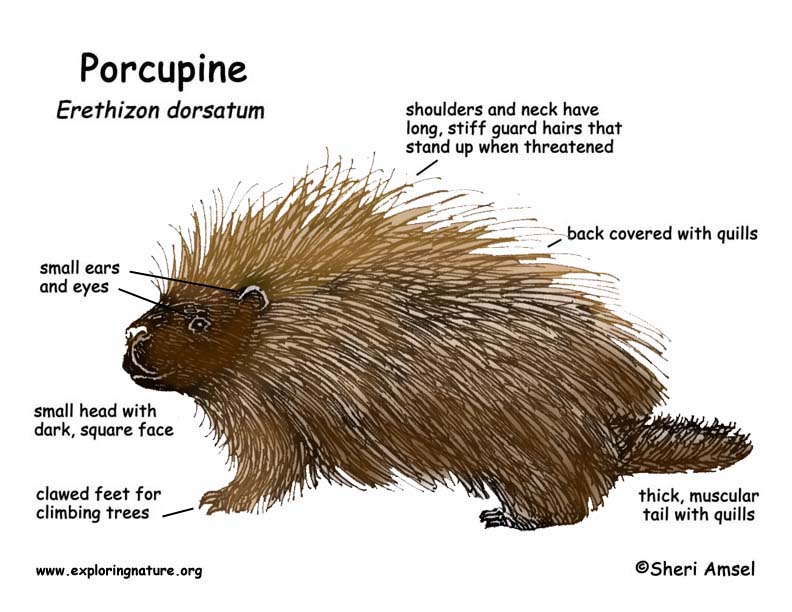

Porcupines can be found across Canada and in the U.S., throughout Alaska, the western U.S., the northerneastern states and the Great Lakes region.
They live in forests and desert regions.
The second largest of all rodents in the U.S., the porcupine has a small head, a large, rounded body and a long, thick, muscular tail. They can grow to 4 feet long including their tail and weigh up to 40 pounds. Their bodies are covered with stiff guard hairs and a band of sharp quills that runs down the center of the back (dorsally) from the head to the tip of the tail.
The quills are a good defense because they each sit in a casing that lets them to pull out easily when a predator touches them. Each quill has a pointed end with a tiny barb, like a fishhook. When a quill sticks into an animal's skin, it does not pull out easily. As the predator’s muscles work, the quills get pulled in further, embedding painfully.
Check out the Adaptations of the Porcupine.
The porcupine is active at night (nocturnal) though can be seen out during the day. They are good climbers (arboreal). When a porcupine is attacked by a predator, it will turn its back and raise its quills to make them point toward the predator's face.
They are herbivores feeding on leaves, twigs, green plants and tree bark in the winter.
Predators are coyote, mountain lion and fisher.
Females are pregnant for 4-5 weeks (gestation) having 1-2 babies.
They can live 5 to 6 years in the wild. They are listed as Lower Risk - least concern.
Kingdom: Animalia
Phylum: Chordata
Subphylum: Vertebrata
Class: Mammalia
Order: Rodentia
Suborder: Hystricomorpha
Family: Erethizontidae
Subfamily: Erethizontinae
Genus: Erethizon
Species: Erethizon dorsatum
When you research information you must cite the reference. Citing for websites is different from citing from books, magazines and periodicals. The style of citing shown here is from the MLA Style Citations (Modern Language Association).
When citing a WEBSITE the general format is as follows.
Author Last Name, First Name(s). "Title: Subtitle of Part of Web Page, if appropriate." Title: Subtitle: Section of Page if appropriate. Sponsoring/Publishing Agency, If Given. Additional significant descriptive information. Date of Electronic Publication or other Date, such as Last Updated. Day Month Year of access < URL >.
Amsel, Sheri. "Porcupine" Exploring Nature Educational Resource ©2005-2024. December 13, 2024
< http://www.exploringnature.org/db/view/Porcupine >


